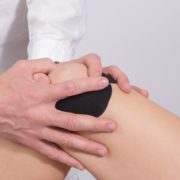How Mobility and Strength Are Key to Resolving a Meniscus Tear Naturally
A meniscus tear is one of the most common knee injuries, and it’s known for causing significant pain, swelling, and restriction of movement that can seriously disrupt an active lifestyle.
While surgery may seem like the only solution – and perhaps that’s what you’ve been told – many people (80% in fact) can successfully avoid invasive procedures like cortisone and surgery if they want to.
The key?
Focusing on specialized mobility and strength training of your knee. But first – what exactly is a meniscus tear and how does it cause problems for your knee?
The meniscus is a cartilaginous structure in your knee joint that acts as a shock absorber. It sits between your thigh bone (femur) and shin bone (tibia) and you have two of them: one on the inside of your knee joint (medial) and one on the outside (lateral). Together, they help distribute weight and cushion your knee during activities like walking, running, and jumping.
So how do meniscus tears happen?
You can get a meniscus tear suddenly from twisting or pivoting motions, or it can develop gradually over time due to age or wear and tear.
But here’s the thing… Sometimes – especially when your meniscus tear develops slowly – it can be damaged without feeling any knee pain or symptoms. For example, a study published in the New England Journal of Medicine found that 35% of people over the age of 50 had meniscus tears on their MRI, but no knee pain or other symptoms. In another study, published in the Journal of the American Medical Association – it was reported that 60% of men and women over the age of 65 who had a meniscus tear on their MRI also had no symptoms in their knees. What is the significance of this? It means that it’s entirely possible to “live” with a meniscus tear and not have any knee pain – which means it’s also entirely possible to avoid surgery and cortisone shots.
So why do some meniscus tears cause pain when others don’t?
When you have a meniscus tear – it has the potential to disrupt your knee’s natural mechanics – but not all tears do.
When the mechanics of your knee are compromised, that’s when you experience symptoms. Why? Because faulty knee mechanics (over time) will cause compensatory strategies to happen in the joint itself – as well as the surrounding muscles and structures.
This is what actually causes pain – not necessarily the tear itself.
Simply going in and “cutting out” the meniscus tear will not solve the problem of faulty knee joint mechanics. It’s why so many people end up with no relief at all after surgery – or just temporary relief of pain that returns anywhere from months to years later. In 80% of knee pain cases that involve a meniscus tear – the faulty knee mechanics are what truly cause the problems and pain – not the tear itself. That’s why focusing on the joint mechanics and mobility first is more important – because if you can restore that – the tear often becomes a non-issue – just like all the people in those research studies.
Now – when I talk about knee mechanics – I’m referring to both knee mobility and strength – and how they work harmoniously together.
Mobility refers to the ability of your knee joint to move smoothly and freely through its full range of motion. Strength refers to the stability around your knee joint – which comes from muscles and tendons. When a meniscus tear causes your knee joint mobility to be blocked and disrupted – meaning it’s unable to bend and extend properly – it puts stress on the surrounding structures and muscles – causing a cascade of events that eventually lead to pain and swelling.
To achieve natural knee pain relief after a meniscus tear – restoring mobility is the first critical first step – followed by strengthening. But a lot of people get this wrong. That’s why it’s important you work with a mechanical knee pain specialist who understands the intricate nature of a meniscus tear and how it impacts your knee mechanics. You can’t just do random strength and mobility exercises. They need to be prescribed to you in a specific and strategic manner so that you can “free” the tear and restore your knee mechanics. In other words, YouTube and Google won’t be able to help you.
If you’re confused – I don’t blame you – but the research doesn’t lie.
For most people, especially those over the age of 40, there’s a 70-80% chance you can get full relief of your knee pain after a meniscus tear, without any type of surgery or procedure. This is not a popular opinion by the way. Arthroscopic meniscus surgery is one of the most common (and profitable) surgeries out there. If a meniscus tear appears on your MRI – a common recommendation will be surgery. But if that’s not what you want – I’m here to tell you it’s entirely possible to resolve pain and dysfunction from your meniscus tear naturally. But you’ll want to work with a mechanical knee pain specialist to do that. Reach out if you need help finding one in your area.
Are you local to Portsmouth, NH? If so, consider speaking to one of my specialists in a Free Discovery Session. This 30-min session is a designed to: 1. Make sure we can help you 2. Make sure you’re a good fit for what we do. 3. Make sure we’re a good fit for you. Click here to speak with a specialist.
Dr. Carrie Jose, Physical Therapist and Pilates expert, owns CJ Physical Therapy & Pilates in Portsmouth and writes for Seacoast Media Group. To get in touch or sign up for her upcoming Masterclass for Knee Pain Sufferers – CLICK HERE or call 603-380-7902



